Lobelia - The Ultimate Growing Guide from Proven Winners®
Annual lobelia (Lobelia erinus) blooms prolifically for months, with a trailing, spreading or bushy habit that’s perfect for containers and landscape plantings.
 Buy lobelia plants – Order annuals online and have them shipped right to your door
Buy lobelia plants – Order annuals online and have them shipped right to your door
Sometimes called dwarf lobelia to distinguish from tall perennial types, many lobelia annual varieties occur in hues of sky or true blue, a hard-to-find flower color that is coveted by gardeners. Lobelia flowers can also be white, pink or purple. The small two-lipped tubular flowers are attractive to hummingbirds, bees and other insect pollinators.
Growing lobelia is easy. Hardy in USDA zones 9-11, this lobelia type is a tender perennial grown as an annual in most regions. Lobelia bloom time ranges from spring to fall, though it flowers best during cooler months. These versatile flowering plants can be used in hanging baskets, window boxes, for pathway or border edging, in mass plantings, or wherever a cheerful splash of color is needed.
PLANTING & LOBELIA CARE
How to plant: Lobelia plant performs best with full sun to partial shade and rich, well-draining soil. Choose a site that receives at least 4-6 hours of direct sun. Follow these steps and space garden lobelia plants 6-18 inches apart, depending on the variety.
- Loosen soil in the planting area and dig a hole slightly wider and deeper than the root ball.
- Remove the plant from the nursery pot and tease out roots if potbound.
- Set the plant in the hole with the base level with the
- Backfill the hole with soil and tamp down slightly to remove air pockets. Water well.
Soil: Lobelia prefers rich, well-amended soil with a slightly acidic pH between 6.0 and 7.0. Mulch with a layer of compost to add nutrients, suppress weeds and retain moisture. For containers, use a high-quality all-purpose potting mix.
Watering: Keep lobelia evenly moist but not soggy. Overwatering may cause root rot or other diseases. Water regularly during extreme heat or prolonged dry spells. Too little water can cause plant stress, stunted growth, fewer flowers or brown foliage.
Fertilizing: Lobelia flowers best with regular fertilizing. Apply a time-release granular fertilizer at the time of planting and supplement with an all-purpose liquid fertilizer every 4-6 weeks.
How to deadhead lobelia: If plants become leggy or flowers begin to wane, lightly shear plants by up to a third and fertilize to encourage new branching and flowering.
TRY THESE PROVEN WINNERS® VARIETIES
Try these varieties in your landscape:
|
|
|
|
|
LOBELIA FAQ’s
Is lobelia a sun or shade plant?
This versatile plant can be grown in full sun or partial shade. Too much shade will result in fewer flowers. Protect plants from hot afternoon sun in warmer climates, and provide more light in northern locations.
Is lobelia deer resistant?
Lobelia is generally regarded as deer-resistant, though deer may graze on plants if other food sources are scarce.
Do lobelia grow back every year?
Lobelia is treated as an annual in most regions, though it may come back from year to year in warmer climates. There are perennial lobelias such as cardinal flower.
How do you keep lobelia blooming all summer?
Hot weather can slow down or halt production of lobelia flowers. Keep plants well-watered during heat spells. The Proven Winners® Laguna® series is bred for heat tolerance and more prolific summer flowering.
Is lobelia a perennial or annual?
Hardy in USDA Zones 9-11, lobelia can survive as a perennial in warmer regions, but is most often grown as an annual.
HOW TO USE LOBELIA IN YOUR LANDSCAPE
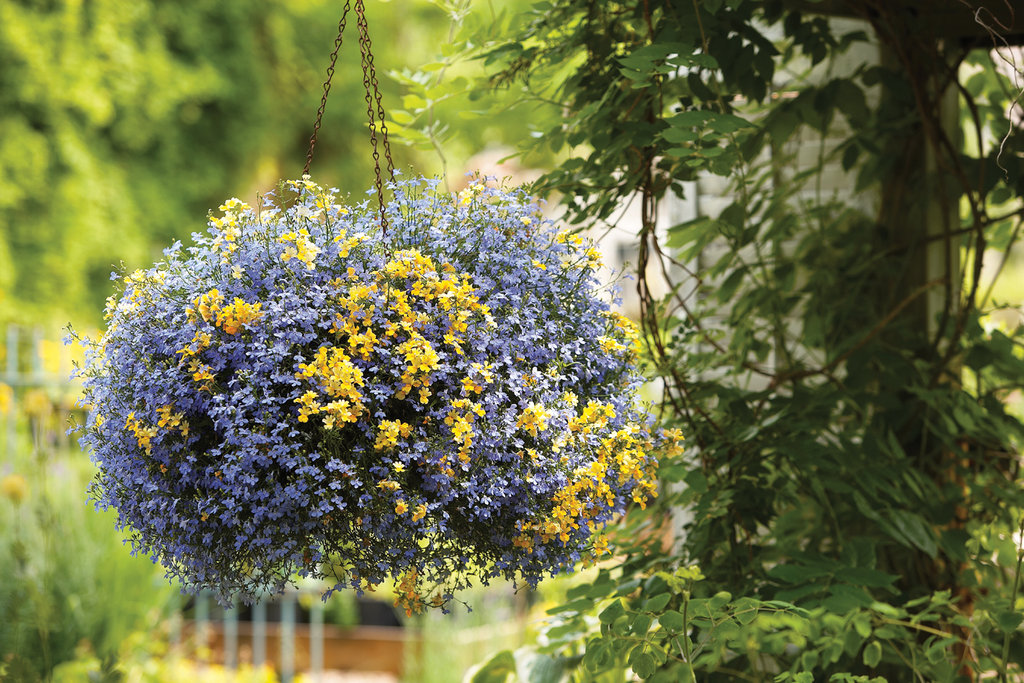 The nonstop bloom, beautiful flower colors and ability to thrive in full sun or partial shade makes lobelia a versatile addition to any landscape. Here are just a few ideas on how to use lobelia in your yard:
The nonstop bloom, beautiful flower colors and ability to thrive in full sun or partial shade makes lobelia a versatile addition to any landscape. Here are just a few ideas on how to use lobelia in your yard:
- For early-season color, combine lobelia with other mid-to-late spring bloomers such as bleeding heart, sweet alyssum, calendula or poppies.
- Use lobelia as a colorful bedding plant underneath roses and other shrubs.
- Liven up the front of a mixed border with pockets of lobelia for consistent season-long color while trees, shrubs and perennials go in and out of bloom.
- Add lobelia to fall plantings to contrast with warm harvest colors of gold, orange and brown.
- Use lobelia as edging plants to line a pathway, with a single color or by alternating different hues.
- Combine hanging lobelia in a window box with other annuals that can tolerate partial shade such as impatiens, wishbone flower and coleus.
- Plant trailing lobelia in a hanging basket by itself or with other trailing annuals such as verbena, Superbells® or bacopa for a decorative porch accent.
- Plant lobelia in pots as a “filler” or “spiller” element in combination with other annuals.
- Mass a spreading type along a slope or allow to spill over a rock wall.
- Place a lobelia hanging basket on a shepherd’s hook near a patio, deck or walkway to enjoy the flowers up close.
COMPANION PLANTS
Plant lobelia alongside other plants with similar cultural needs of full sun to partial shade, rich soil and good drainage.
For early season cool weather color, plant with:
- Frizzle Sizzle Lemonberry ruffled pansy
- Snapshot™ Sunset snapdragon
- Sunsatia® Blood Orange nemesia
For a partial shade hanging basket or window box, combine with:
- Rockapulco® Wisteria impatiens
- ColorBlaze® Lime Time® coleus
- Catalina® Pink wishbone flower
- Dragon Wing® Pink begonia
For a full sun container combination, plant alongside:
- Supertunia® Royal Velvet® petunia
- Superbells® Yellow calibrachoa
- Superbena® Scarlet Star verbena
- Americana® Salmon zonal geranium



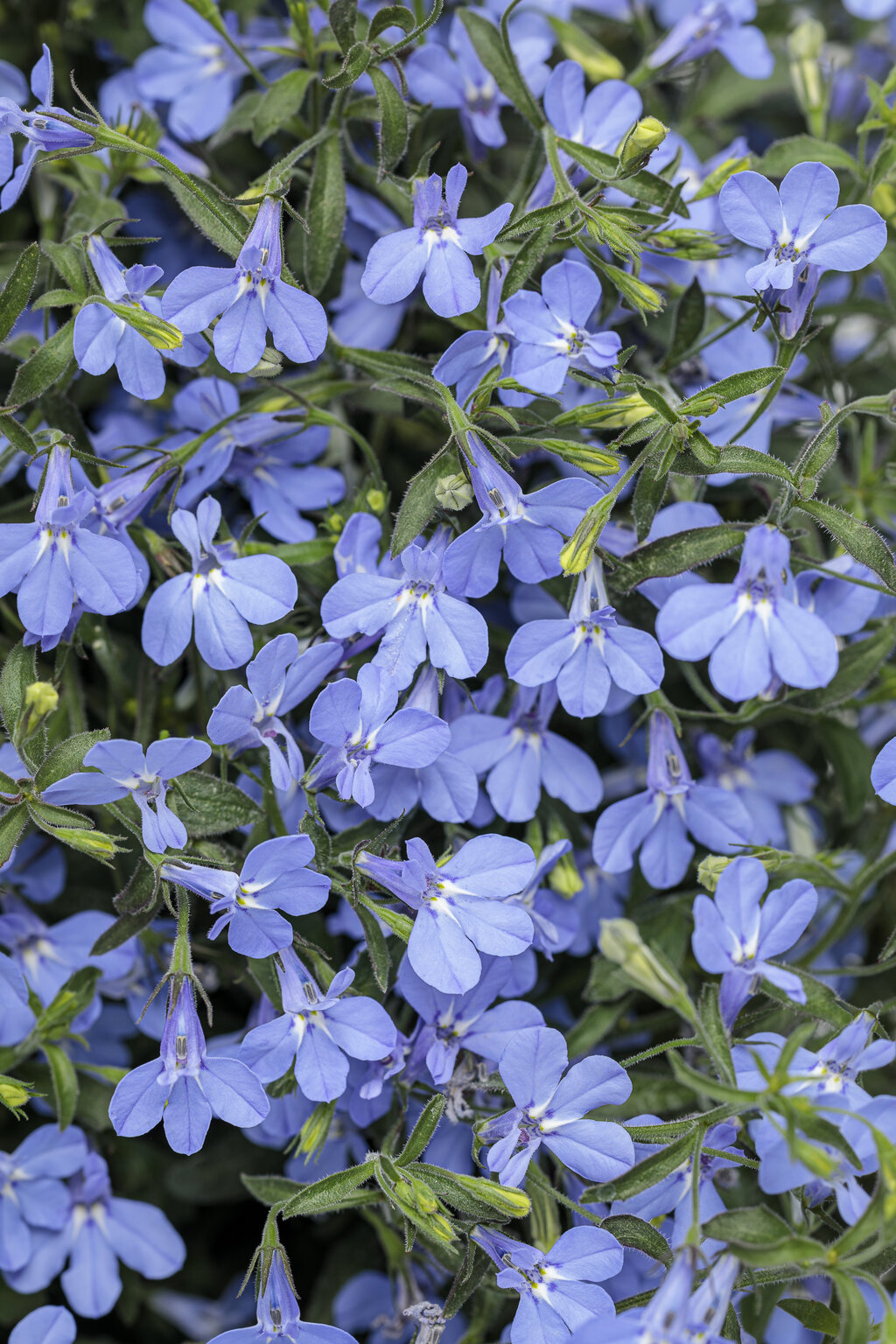 Laguna® Sky Blue
Laguna® Sky Blue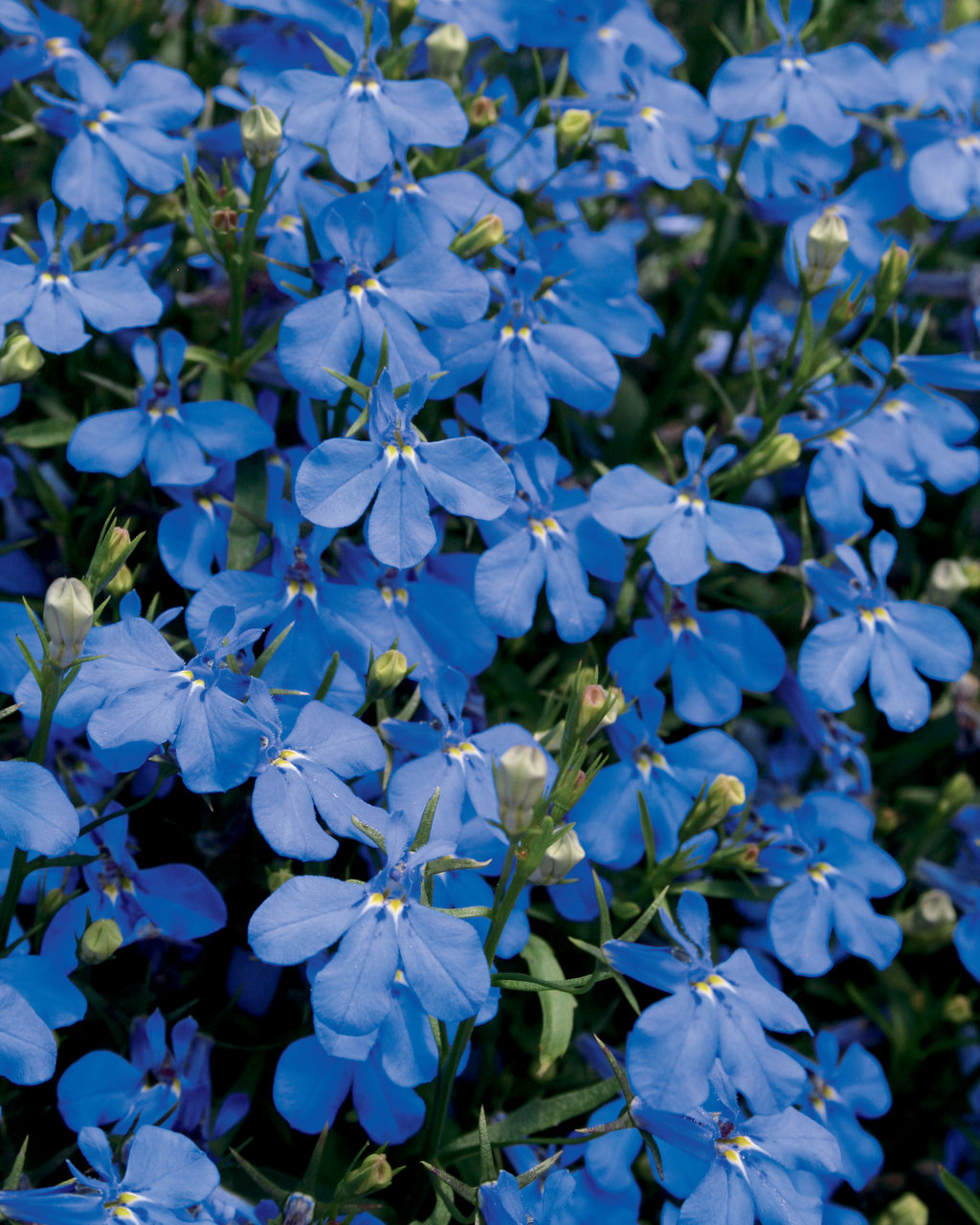
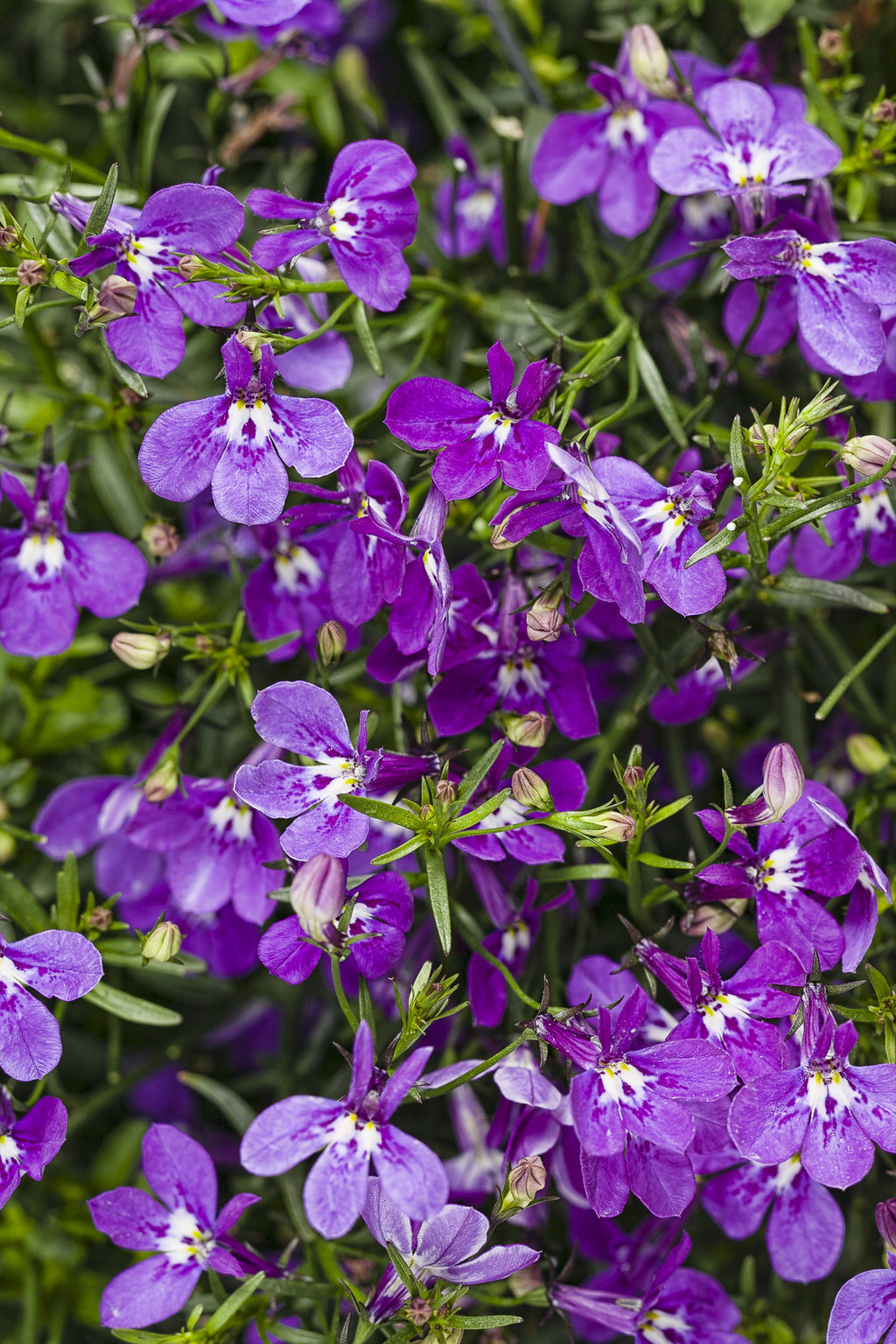 Laguna® Ultraviolet™
Laguna® Ultraviolet™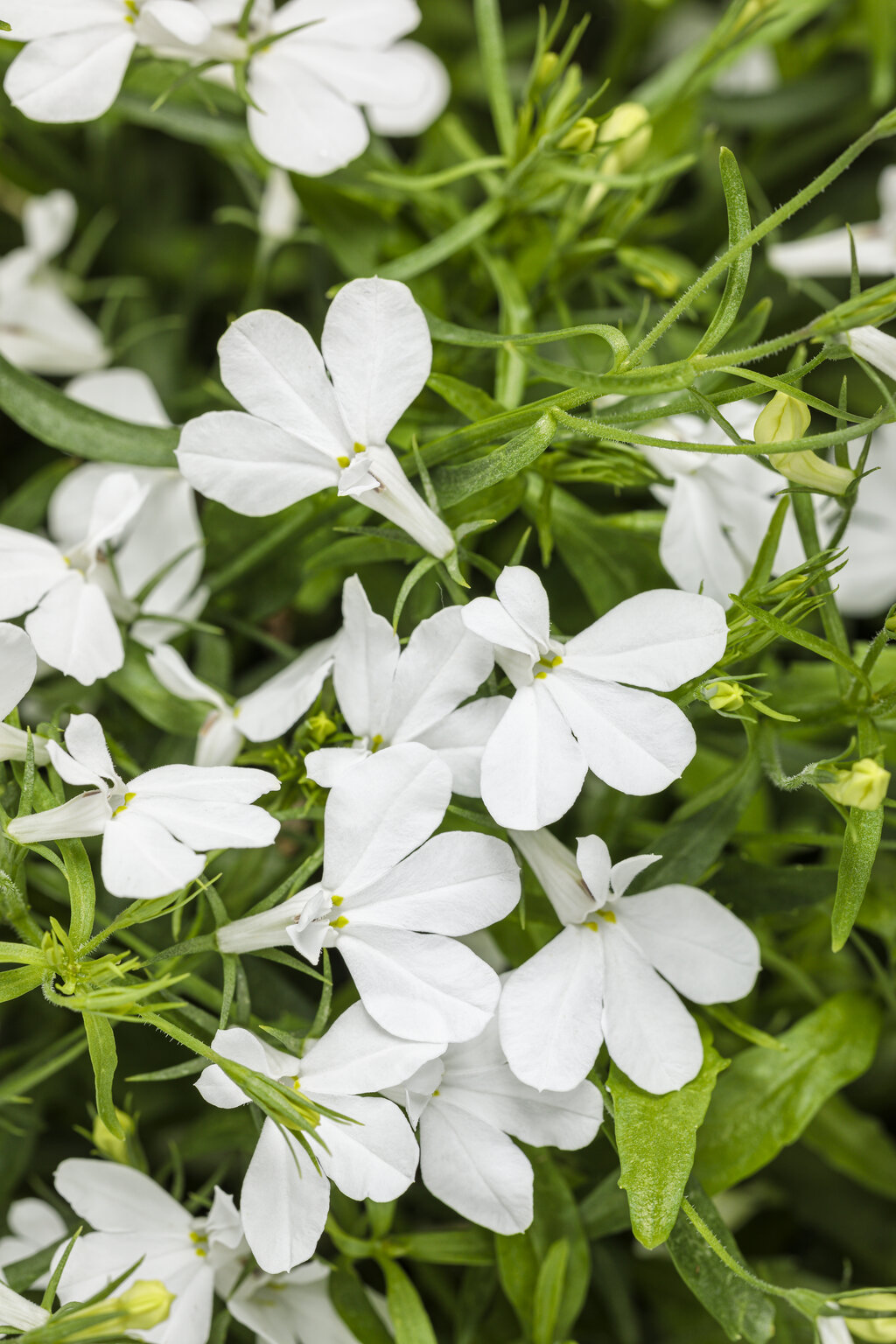
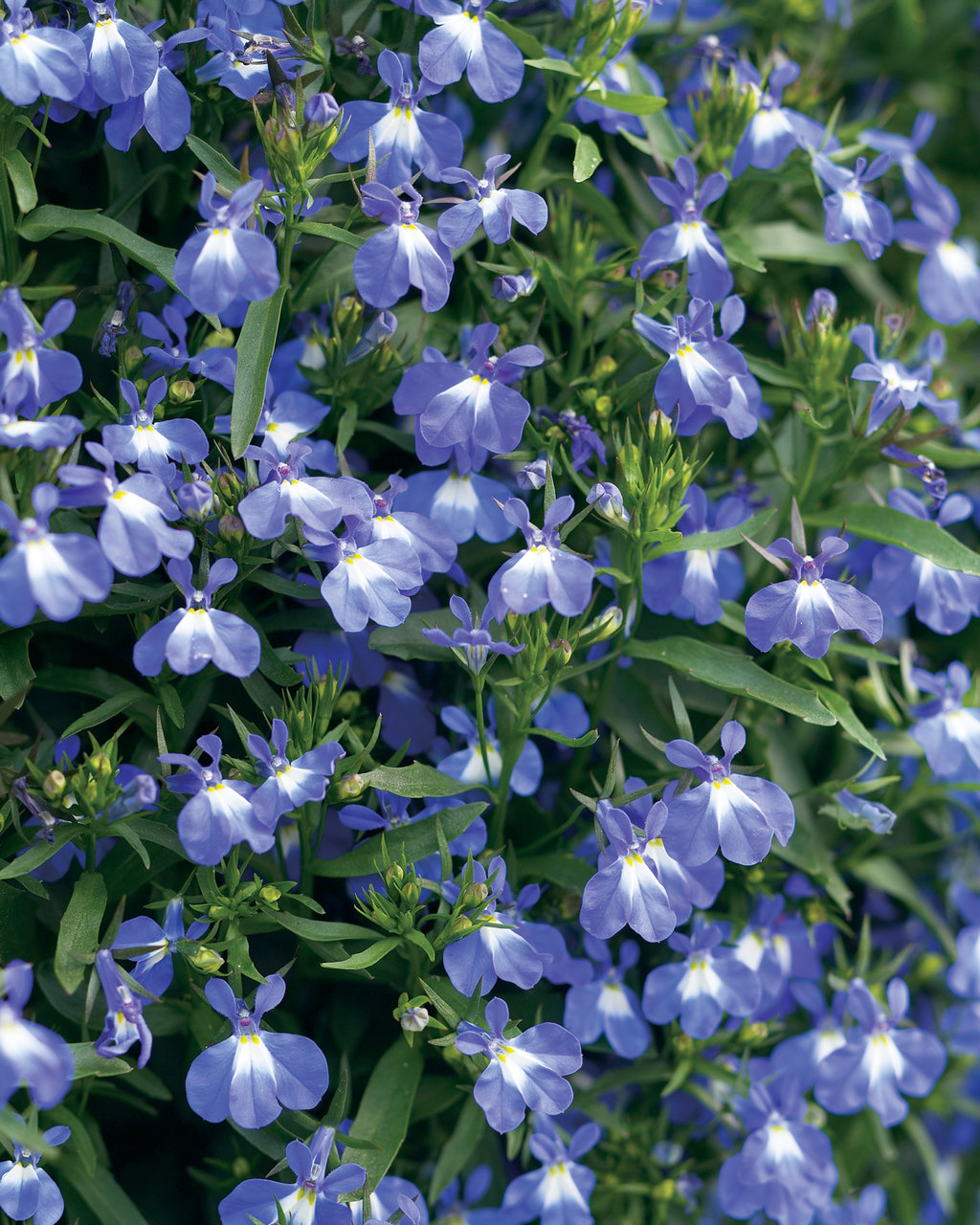 Laguna® Compact Blue with Eye
Laguna® Compact Blue with Eye
